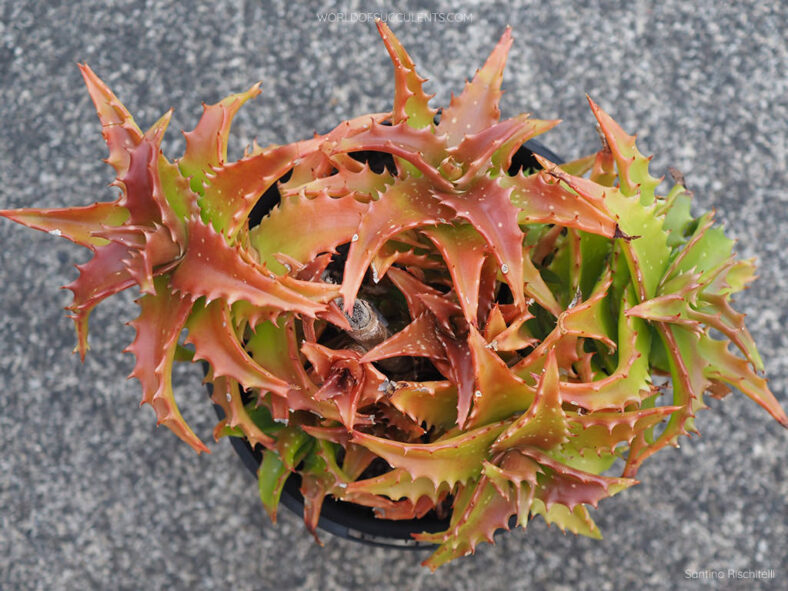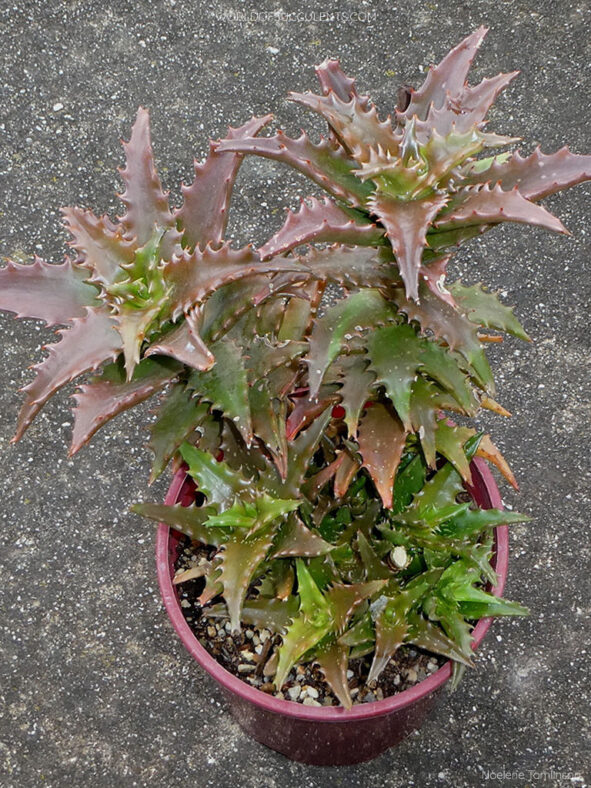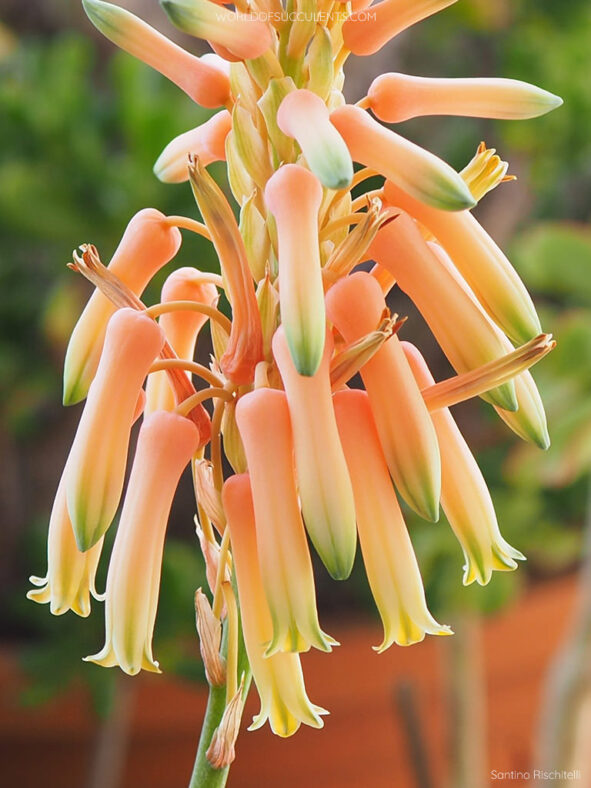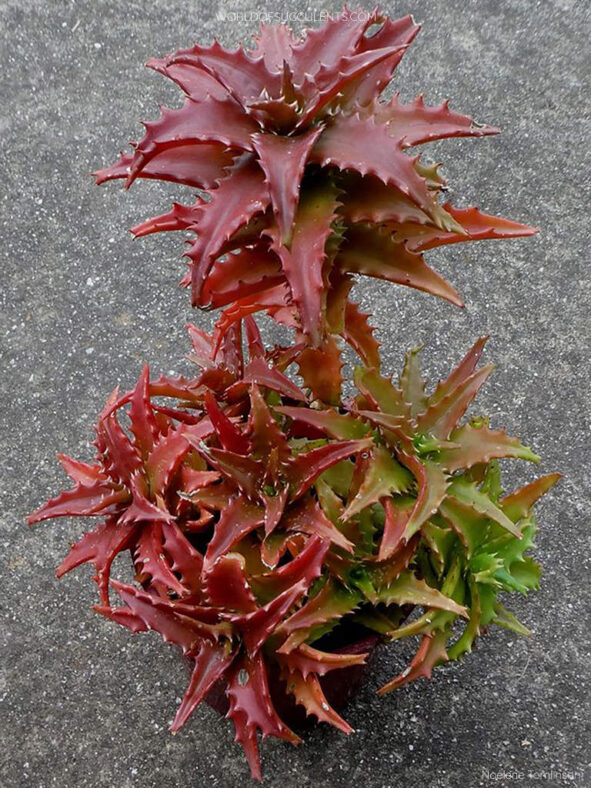Aloe congolensis is not accepted as a separate species and is treated as a synonym of Aloe buettneri, which is notably distinct. Aloe buettneri typically has a solitary habit and grows from a bulbous rootstock. The name "Aloe congolensis" was first introduced by Émile Auguste Joseph De Wildeman and Théophile Alexis Durand in 1899 and is often noted as being "imperfectly known or doubtful." Despite this uncertainty, the plant has been offered and circulated under this name for a long time.
The book "The Aloes of Tropical Africa and Madagascar" mentions that the first description of this plant is based on specimens collected from a sandy bush near Kimwenza in the Democratic Republic of the Congo. There is a thought that this plant may be a hybrid and is sometimes sold as Aloe 'Nuda'. We believe it is indeed a hybrid, as it resembles Aloe dorotheae and Aloe morijensis more closely than it does Aloe buettneri. However, it remains a unique Aloe with stunning growth.
Scientific Name
Aloe congolensis De Wild. & T.Durand
Accepted Scientific Name
Aloe buettneri A.Berger
Common Name(s)
Congo Aloe
Scientific Classification
Family: Asphodelaceae
Subfamily: Asphodeloideae
Genus: Aloe
Etymology
The specific epithet "congolensis" (pronounced "kon-go-LEN-sis") means "of or from Congo" and refers to the origin of this plant.
Origin
Aloe congolensis is native to the Democratic Republic of the Congo.
Description
Aloe congolensis is a small, clustering succulent that forms rosettes of stiff, plastic-like, wedge-shaped leaves. The rosettes can reach a diameter of up to 6 inches (15 cm) and are supported by sprawling stems that can grow up to 24 inches (60 cm). The leaves have a slightly recurved tip and large, sharp teeth along the margins. When exposed to full sun, the glossy, bright green leaves can develop reddish-brown hues or turn completely reddish-brown.
During the spring and summer, Aloe congolensis produces reddish-orange flowers on ascending, unbranched stalks that can grow up to 12 inches (30 cm) long. The flowers are arranged in a conical cluster at the top of the stalks.

How to Grow and Care for Aloe congolensis
Light: When growing Aloe congolensis indoors, place it in a window with plenty of bright, indirect light. Rotate the pot once or twice a week to ensure all sides of the plant receive equal lighting. Outdoors, the plant prefers light shade, especially during the hottest parts of the day.
Soil: Great drainage is essential for growing this plant, as prolonged moisture can cause root rot. Use commercial soil for succulents, or make your own well-draining mix.
Temperature: When temperatures shift below 50°F (10°C), it is time to bring this plant inside. It tolerates heat fairly well but will not survive a hard frost. Aloe congolensis grows best in USDA Plant Hardiness Zones 10a to 11b, with average minimum winter temperatures ranging from 30 to 50 °F (-1.1 to 10 °C).
Watering: This plant needs regular watering but can tolerate short periods of drought. Water deeply, but only when the soil is completely dry to the touch, and do not let water stand in the rosettes. Cut back on watering during the winter months.
Fertilizing: Although it generally does not require fertilizer, Aloe congolensis will benefit from supplemental nutrients. Use a water-soluble fertilizer diluted to half-strength.
Repotting: Repot only as needed during spring. Pick a container that is one size larger and has drainage holes.
Propagation: To propagate Aloe congolensis, remove the offsets from a mature plant from late spring to early summer. It is also easy to start from seeds. For best results, sow the seeds during the warm months.
Learn more at How to Grow and Care for Aloe.
Toxicity of Aloe congolensis
Aloe humilis is generally considered nontoxic, but ingestion may cause symptoms such as stomach upset, cramps, and diarrhea in both humans and pets.
Links
- Back to genus Aloe
- Succupedia: Browse succulents by Scientific Name, Common Name, Genus, Family, USDA Hardiness Zone, Origin, or cacti by Genus
Photo Gallery
Click on a photo to see a larger version.


